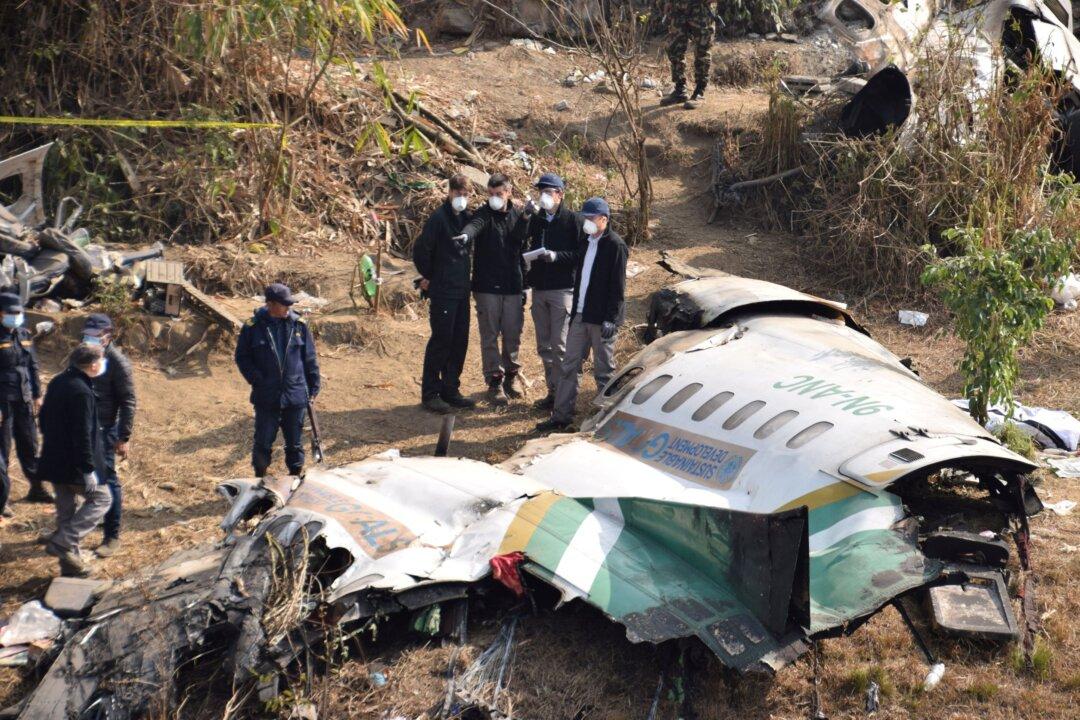The plane crash that occurred in Nepal on Jan. 15 that killed all 72 people on board may have been caused by the pilot pulling the wrong lever during the descent, according to a preliminary investigative report.
The Yeti Airlines aircraft crashed just before landing in Pokhara on Jan. 15 in one of Nepal’s worst airplane crashes in 30 years. Rescuers recovered 71 bodies, with one unaccounted-for person presumed to be dead.
The Nepalese Aircraft Accident Investigation Commission released its preliminary report (pdf) on Feb. 13, suggesting that the pilot may have accidentally pulled the wrong lever, causing the propellers to be feathered.“The flight data recorder (FDR) data did not record any flap surface movement at that time,” the report states. “Instead, the propeller rotation speed of both engines decreased simultaneously to less than 25 percent and the torque started decreasing to [zero] percent, which is consistent with both propellers going into the feathered condition.”





